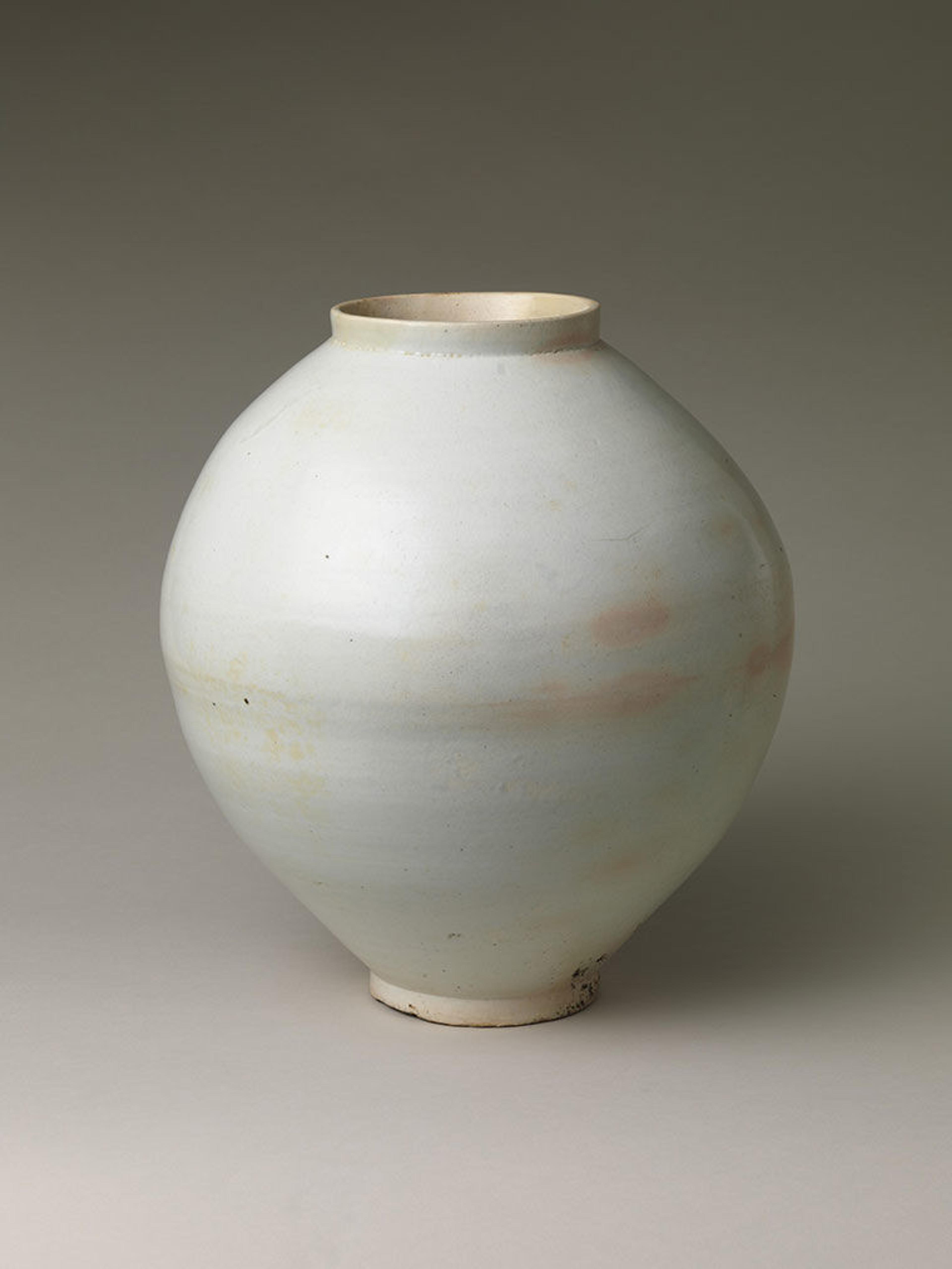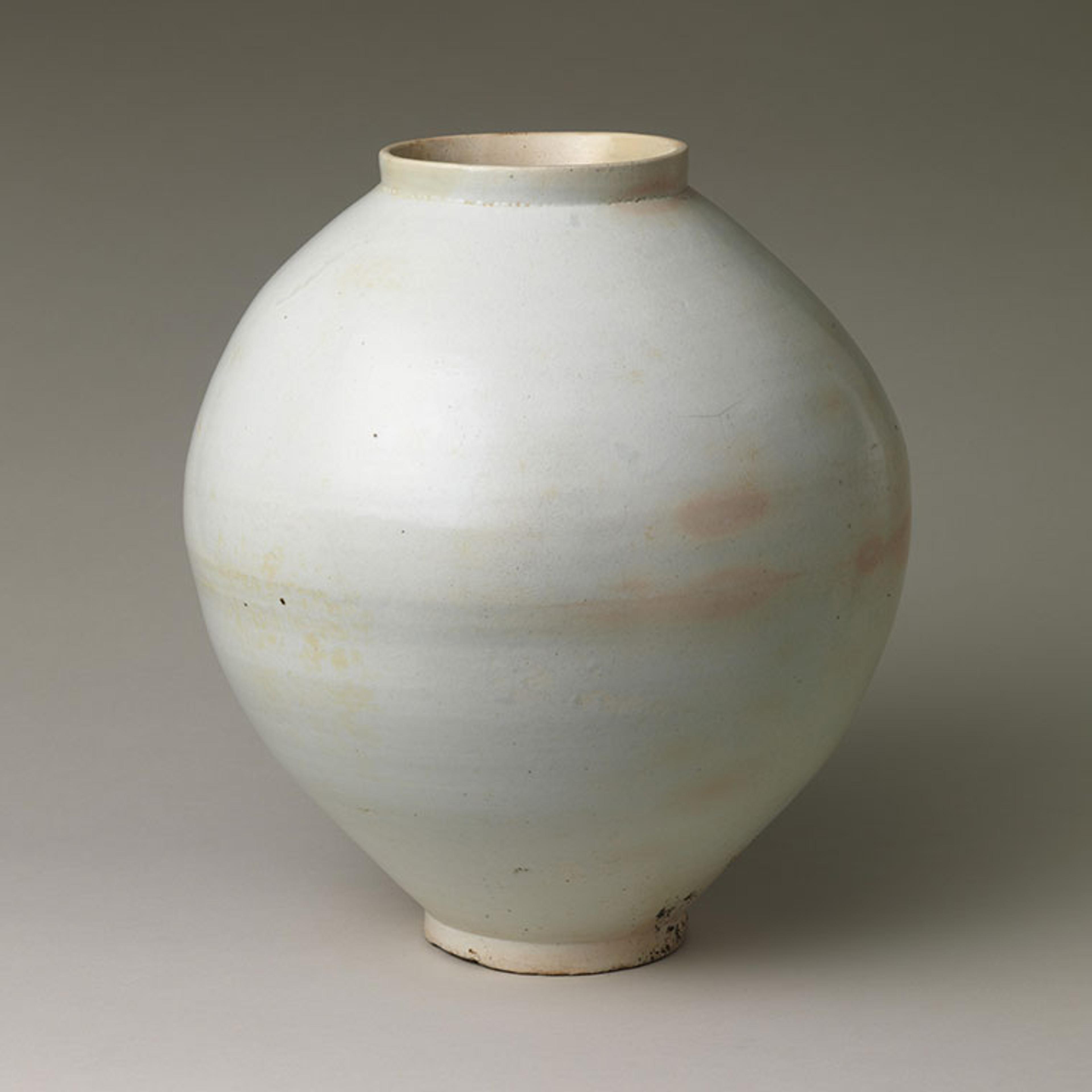Don’t miss the full moon on June 28! But if you do, you can see it again in 29.5 days. As the moon orbits around the earth each month, we see different phases, like new moon, first quarter, full moon, and last quarter. Every 29.5 days, when the sun, earth and moon are aligned in that order, we see a full moon. This large jar gets its name, Moon Jar (Korean: dalhangari), from its shape and color. It reminds people of a full moon.

Moon Jar, second half of the eighteenth century. Korea. Porcelain. H. 15 1/4 x Diam. 13 in. (38.7 x 33 cm). The Metropolitan Museum of Art, New York, The Harry G. C. Packard Collection of Asian Art, Gift of Harry G. C. Packard, and Purchase, Fletcher, Rogers, Harris Brisbane Dick, and Louis V. Bell Funds, Joseph Pulitzer Bequest, and The Annenberg Fund Inc. Gift, 1975 (1979.413.1)
Milky white and round like the moon, the container was created by joining together two porcelain bowls shaped like half circles. Find the seam where they meet at the center of the jar. Look carefully at the color of the ceramic's glaze (a coating on ceramic pottery that produces a glasslike quality after firing). In some spots, it turned a peach color when the vessel was fired! People admired the Moon Jar for its irregularities (the way it was not the same or smooth all over) because it reminded them of the beauty of nature.
In the light of the moon (jar), think about dreams that you might store and keep for later.
Check out more Korean artworks inspired by nature by visiting the Essential Korea exhibition in Gallery 233. You can see it through September 22, 2018.
Visit #MetKids, a digital feature made for, with, and by kids! Discover fun facts about works of art, hop in our time machine, watch behind-the-scenes videos, and get ideas for your own creative projects.

